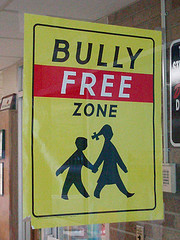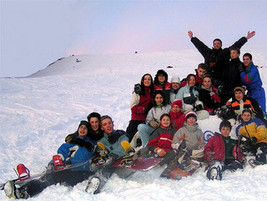|
Welcome to the latest follow up article to my Important New Year's Resolutions for Parents of Teens blog! Here you will find information on the benefits of getting teens involved in their community and ideas about how to get your family started!  Teens who are involved in community activities experience many benefits! Here are just a few: Investment in their community. Teens are able to use their time and talents to engage with others. They may also gain a better understanding of people who are different from them. Role models. Coaches, volunteer supervisors and mentors can provide a safe, positive example to teens. Self confidence. Teens' confidence in themselves will soar as they learn new skills, improve their ability to solve problems and develop leadership skills. Additionally, seeing that they make a difference can be deeply gratifying. Good work ethic. The University of Nevada Extension Office states, "young people involved in community service are more likely to have a strong work ethic as an adult." They learn how to be accountable, make and keep commitments and work well with others. Some pointers as you begin this journey: Find out what activities interest your child. Talk to them and allow them to drive the decision-making process. The more empowered your teen feels from the beginning, the more invested they will be in the -chosen activity later! For indecisive teens, parents may need to be more involved in the decision-making and planning process. Consider your teen. Take their personality into consideration. Not every child will be comfortable playing sports or stepping right into a leadership role. Help them find something that will build upon their strengths. Help them get started. Some teens may be more comfortable starting an activity with the presence of their family. Allowing them to invite a friend along may also boost their confidence heading into a new experience! Consider and manage the risks. Do your research on the organization and meet the adults who will be supervising, leading or coaching your child. Also, talk with your child about their experience on a regular basis to ensure they are safe and comfortable in their chosen activity. Finally, here are a few options to consider with your teen: Sports teams and lessons. Check out your teen's school, the YMCA or local recreation centers. Academic clubs. Mentoring programs. Hobby-based groups. Think chess club, music and theater. Community organizations like 4-H, Girl Scouts and Boy Scouts. Church youth groups. Volunteer opportunities. Hospitals, food banks and animal shelters are often looking for volunteer help. Picture from Flickr. Some rights reserved by Rob Gallop. Bethany Raab is a Licensed Clinical Social Worker in Denver, Colorado.
This week I want to address the second topic covered in my New Years Resolutions blog last month: Sexting. Just to be clear, “sexting” is a combination of the words “sex” and “texting.” It is defined by Urban Dictionary “the act of text messaging someone in the hopes of having a sexual encounter with them later; initially casual, transitioning into highly suggestive and even sexually explicit.” These messages may also include pictures of one self. The Merriam Webster Dictionary includes a similar definition.  It is important for parents and teens to be aware of the risks of sexting behavior. A 2012 study cites states “among girls, the use of sexting behaviors appears to coincide with much higher engagement in risky sex behaviors.” The risk is not limited to teen girls. Did you know that over 75% of teens who are propositioned to have sex via a text, actually end up having sexual intercourse? You are likely already aware of the risks sexual activity including teen pregnancy, contracting HIV or a sexually transmitted disease. Sexting can also have legal ramifications. For example, a teen girl sending a sexually explicit picture of herself to her boyfriend is not illegal (though not a good idea). However, the boyfriend then sharing the picture with one or more people can lead to big problems. This can be considered distribution of child pornography and can carry a prison sentence and the sender being required to register as a sex offender. Psychology Today published an article about the legal concerns with sexting. Here are some suggestions for parents:
Image from Flickr. Some rights reserved by Jhaymesisviphotography. Bethany Raab is a Licensed Clinical Social Worker in Denver, Colorado.
If, as you read, you begin to think that your family might benefit from making changes in one or more of these areas, do not worry! It is never too late to take action. See each step below for specific examples on how to bully-proof your child!
Finally, check out my 2012 blog article on helping kids know what to do if they are bullied or witness someone else being bullied. Click here to read more. Image from Flickr. Some rights reserved by Eddie~S. Bethany Raab is a Licensed Clinical Social Worker in Denver, Colorado.
Parents, this one is for you. We all make our lists at the beginning of the year of things to start, things to stop and things to improve upon. These goals are generally made in the spirit of self-improvement. I’m curious, how many of your resolutions involved your habits as a parent? What do you see as areas for improvement in your role as a parent? While you think about your own parenting resolutions, I have three suggestions for you to consider as you begin 2014 and seek to make it a great year for you and your family! I’ll start with the not-so-fun resolutions. Talk to your children about bullying, both in-person and online. This is a very real issue that can have a devastating impact on kids, both those being bullied and those who are the bullies. Check out the Stop Bullying website for more information. Talk to your teens about their experience at school. Ask about bullying. Find out who the bullies are and who is being targeted. If you find out that your child is being bullied or is doing the bullying, talk to them about their experience. It can be helpful to talk to the school or have your child see a counselor. However, it is most important to hear your child’s perception of what is happening to know how to best proceed. Talk to your teens about the risks of sexting. Let’s start out by defining what “sexting” means. According to Psychology Today, “sexting is sending, receiving, or forwarding sexual photos or sexually suggestive messages through text message or email.” Did you know that over 75% of teens who are propositioned to have sex via a text, actually end up having sexual intercourse? Did you know that a teen sending a sexually explicit picture of themselves to another person can be considered distribution of child pornography? Did you know that a child as young as 10 years old can be charged with a sexual offense in Colorado? If you didn’t know, it is likely that your teens do not know either. It is time to include a discussion about technology in the “birds and the bees” talk. Here is a great article to get you started. Now that those are out of the way, I’ll end with a more “fun” resolution! Help your kids get involved in an extracurricular activity. Many teens naturally find their way to fun and appropriate extracurricular activities. Others may have a more difficult time getting involved. Here are a few benefits of teens being involved in social activities: healthy friendships, improved self-esteem and good role models to name a few. They are good for parents, too! Not only can you feel good about your teen getting all of the above-named benefits, you might just get a little time to yourself, too! Here is a great article on helping your kids get involved. All of this being said, these conversations will be easier and more meaningful for both parents and teens who feel safe and comfortable talking to one another. I encourage you to foster an environment in your home where it is safe for your teen to talk to you about anything. Yes, anything! Thanks for reading today! Check back over the next few weeks as I blog about each of the above mentioned topics in more detail! Bethany Raab is a Licensed Clinical Social Worker in Denver, Colorado.
Happy Holidays to all of the wonderful friends, supporters and clients of Raab Counseling & Consulting Services! May you experience peace and joy during this 2013 holiday season! Bethany Raab is a Licensed Clinical Social Worker in Denver, Colorado.
1) Go ice skating. 2) Write a letter to a friend or family member who lives far away. 3) Make a Christmas Carol music video. 4) Create place cards or other decorations for your family’s holiday celebration. 5) Bake cookies with friends. 6) Help a younger sibling write a letter to Santa. 7) Go sledding (or snowboarding or skiing!) 8) Have a holiday movie marathon. 9) Learn how to make a traditional family dish. 10) Wrap your bedroom door in paper or foil so it looks like a present. 11) Drink hot chocolate while reading a good book. 12) Turn off all lights except the Christmas tree lights. Relax in the quiet room or listen to music. 13) Volunteer time at a local charity. 14) Learn how other cultures and religions celebrate important holidays. 15) Bundle up and go for a walk to admire holiday lights in your neighborhood. Here are some links to websites that inspired this list and for more ideas! Parenting Teens: 50 Fun Holiday Activities Your Teen Will Love Parenting Teens: 101 Fun Things for Teens to Do This Winter Parent Map: 15 Meaningful Holiday Traditions and Fun Family Activities Here are some fun ideas for parents, too! Real Simple: 50 Fun Winter Activities Image from Flickr. Some rights reserved by katushya Bethany Raab is a Licensed Clinical Social Worker in Denver, Colorado.
 Hosting holiday meals, cookie baking, cleaning, decorating, traveling, hosting out-of-town guests, entertaining children who are out of school, holiday gift shopping, parties, and religious celebrations. Did I cause you to feel anxious just thinking about everything that the holiday season entails? This list is just a small example of what many people have planned for the next month. In a re-post from my 2012 holiday blog, here are some tips on managing your to-do list and having a little fun in the process! 1) Take a break. You are not obligated to attend every holiday party or community activity to which you receive an invitation. Rest and quiet time at home will help you be more flexible in stressful situations. 2) Have an ally. Talk with your partner, a close friend or trusted family member about how you are doing and any concerns you may have regarding schedules, difficult relationships or troubling behaviors by your children. Using your support network will help you manage difficult situations more easily than trying to do it on your own. Provide support to your children and teens during this busy time of year. Be sure to carve out quiet time with them during the holiday season. 3) Stick with the household rules. Children and teens should continue to complete their responsibilities and get to bed at a decent time, even if they are out of school. Keeping a schedule will help keep order during a traditionally busy time of year. This will also help decrease difficulties in returning to a normal routine after the holidays. And, yes, it is alright to give consequences to children and teens for not meeting their expectations during the holidays! 4) Be generous and express gratitude. The old statement "it's the thought that counts" is really true! It is not necessary to go into debt to satisfy your child or teen's holiday wish list. Teach your children about generosity by volunteering or buying gifts for underprivileged children. This will help them be more appreciative of the gifts they do receive. Writing thank you notes with your children and teens will help foster feelings of gratitude. Read more here about the benefits of gratitude in teens! 5) Create or continue meaningful traditions. Bake cookies, go ice skating, decorate the family tree and watch holiday movies. These traditions are what children and teenagers will remember and treasure as they grow older. Most importantly: take care of yourself so you can enjoy the joyous celebrations to come! Click here to read the original post. Image from Flickr. Some rights reserved by tonystl. Bethany Jones Raab is a Licensed Clinical Social Worker in Denver, Colorado.
 Thanksgiving is upon us and I wanted to offer a few thoughts on the benefits experienced by teens who express gratitude. 1) Increased happiness and overall well-being A research study by the American Psychological Association found that teens, like adults, experience a variety of benefits from the act of gratitude. The author of numerous studies about gratitude, Giacomo Bono, PhD, psychology professor at California State University, had this to say about the benefits of gratitude in high school aged teens: “Increases in gratitude over a four-year period were significantly related to improvements in life satisfaction, happiness, positive attitudes and hope.” According to the Harvard Medical School, “gratitude is strongly and consistently associated with greater happiness. Gratitude helps people feel more positive emotions, relish good experiences, improve their health, deal with adversity, and build strong relationships.” 2) Lower occurrence of depression symptoms Teens who express gratitude on a regular basis typically report fewer symptoms of depression. Giacomo Bono, PhD, suggests this is a result of being connected and reminded of the good aspects of one’s life. "People who are grateful are more optimistic and hopeful, feeling they have the resources to be successful in their future," said Bono. Click here for more information. The same goes for adults: researchers at York University in Toronto found that depressed study participants who completed a “gratitude exercise” every night, were less depressed six months after the study was complete. 3) Greater contributions to society According to a 2010 study of gratitude in teens by Froh, Bono & Emmons, "gratitude ignites a passion for helping others and contributing to society." The study indicates teens that are grateful tend to be more connected to their communities and want to give back, both as teens and later as adults. So how can you reap the benefits of gratitude? Here are some ideas:
Happy Thanksgiving! Photo from Flickr. Some rights reserved by woodleywonderworks. Bethany Jones Raab is a Licensed Clinical Social Worker in Denver, Colorado.
I have noticed a recent increase in conversations on social media regarding parents' choice to vaccinate their children and concerns that vaccinations can cause autism. Specifically, a 2011 NPR article titled Study Linking Childhood Vaccine And Autism Was Fraudulent has resurfaced, sparking fervent discussion about vaccinations. Dr. Andrew Wakefield, a British physician, and his colleagues published studies in 1998 and 2002 linking the measles, mumps and rubella (MMR) vaccine to autism. The studies were published in The Lancet which is self-described as "the world's leading general medical journal and specialty journals in Oncology, Neurology and Infectious Diseases." The publication officially retracted the studies in 2010 after discovering that the studies were fraudulent. See this NPR article which links to the official retraction from The Lancet. Click here for an article from the American Academy of Pediatrics outlining the original Wakefield studies and the specific flaws of each. I am interested in hearing from my readers on this topic. Here are some specific questions to get the discussion started:
Please comment with your thoughts! *The author of this article is not a medical professional and is not authorized to provide medical advice. The purpose of this article is to encourage discussion on the decision-making process used by the public to determine whether or not to vaccinate children. No medical advice will be given in response to comments. Please contact your doctor with specific medical concerns about vaccines, autism and/or the health of your children. Bethany Jones Raab is a Licensed Clinical Social Worker in Denver, Colorado.
 Fall and winter months bring familiar images of holiday parties, hot chocolate and, in Colorado, skiing and other winter sports. The cooler months bring excitement for many, while others have a different experience. Some people notice increased sadness, low energy levels, weight gain, a tendency to oversleep, irritability and a general "blah" feeling beginning in the fall and often lasting through the winter. These and other symptoms of the "winter blues" affect approximately 14% of Americans according to the National Center for Biotechnology Information. However, 6% of Americans experience a more marked set of symptoms known as Seasonal Affective Disorder, often referred to as SAD. Both the "winter blues" and SAD are frequently linked to a decrease in exposure to light during the fall and winter months. According to the Mayo Clinic, the actual causes of SAD are largely unknown. The good news is that SAD is a treatable condition. The Mayo Clinic recommends several types of treatment for SAD including light therapy and medication, both of which should be discussed with your doctor. Psychotherapy is also recommended as an effective form of treatment. Click here to learn more from the Mayo Clinic. Now for some more good news! A variety of alternative treatments for SAD can be utilized at home on their own or combined with a plan you discuss with your doctor. Here are a few ideas:
If you are feeling the effects of SAD as winter approaches, rest assured that you are not alone! Give some of these suggestions a try today. Finally, don't hesitate to speak with your doctor if you feel as though you need help managing symptoms of Seasonal Affective Disorder. Bethany Jones Raab is a Licensed Clinical Social Worker in Denver, Colorado.
|
Welcome!
Every blog post you see on this page is written especially for teens and their parents! Like it? Pin it!
Follow me!
Categories
All
|



 RSS Feed
RSS Feed